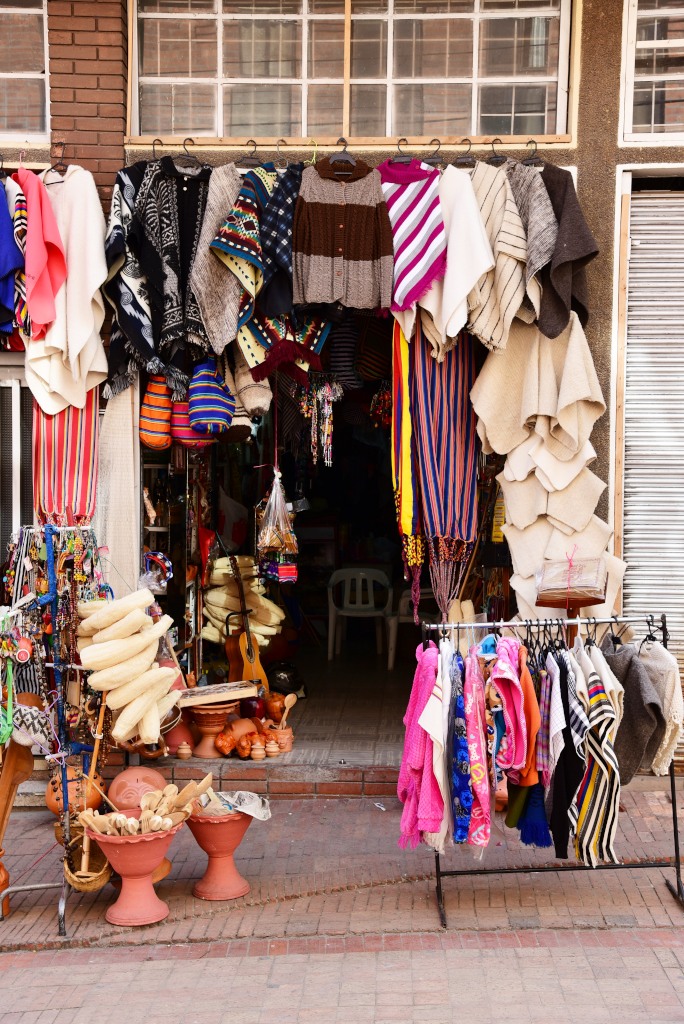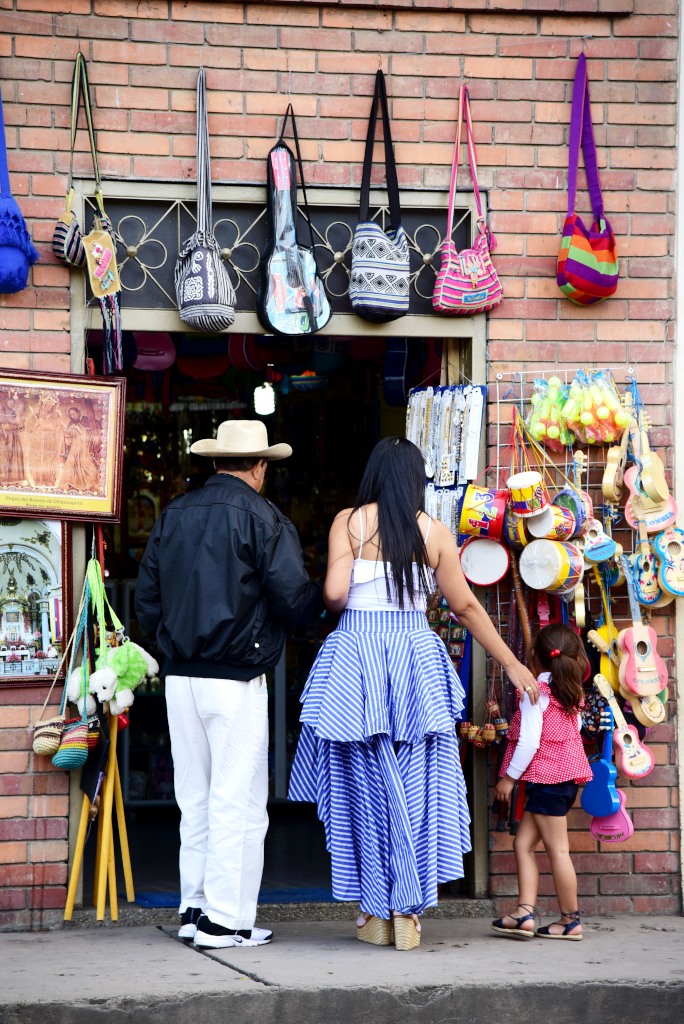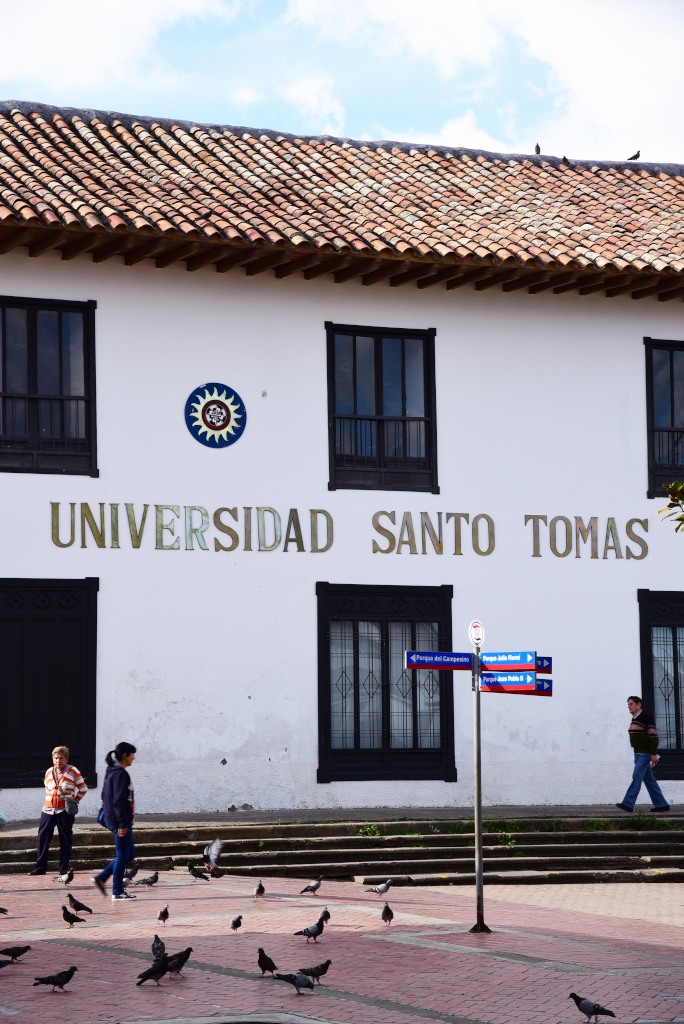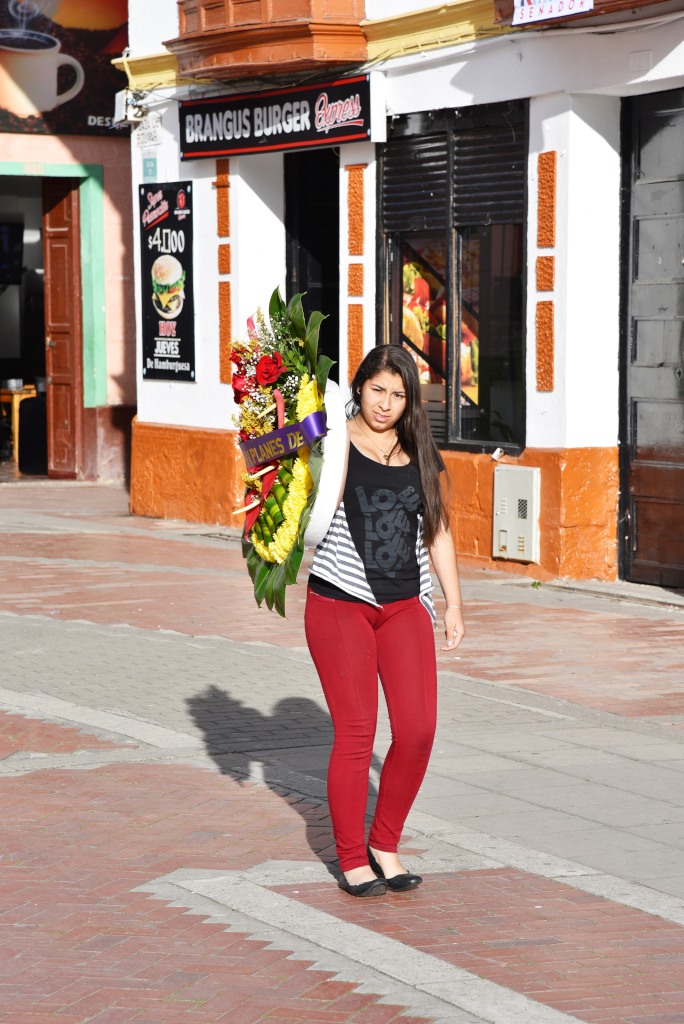January 23rd, 2018
In a shocking display of organization, my things are packed, the necessary cleaning has been done, and I am ready to hand the keys over to my host when he arrives at 10 am. I had a vague notion of going out to the Parkway one last time for coffee, but no, that would potentially leave me unwittingly getting stuck in town for another night, as I am not familiar with the bus service to the town I am going to.

Poor Sebastian gets dragged into a long conversation about Bogotá’s attractions and infrastructure, despite having to get right back to work after seeing me off. Yes, the Transmilenio may represent a great rapid transit service, but it does not serve the needs of citizens well, as it is always overcrowded.
Well, this kind of high volume, high speed bus service is probably as efficient and cost-effective as it gets – the problem is simply that the city has too many people. The city is going to be building a subway, but that will naturally be far more expensive.

Bike paths in Bogotá may seem amazing now, but their presence is not necessarily a given. Even right here on Carrera 19, people were chipping at night at the traffic barriers delineating the bike path out of anger at the reduction in the space available for cars on the road. So that explains why so many of these barriers are damaged!
The days of hoofing it through towns with my backpacks to save a few dollars are over. There are taxis here, and judging by the very seasoned and relaxed faces of the drivers, I can’t see becoming victim of a carjacking at the hands of these drivers any time soon.
It is somewhat of an awkward ritual loading the large bags as well as a towering Canadian into the tiny Colombian taxis. The process hardly gives rise to images of a secuestro express, if only in the most comical manner. My driver is most charming, but is visibly touched by the fact that I am traveling into the depths of Boyacá province, as he is from Tunja himself, where I will land in a few weeks. He waxes on about the beauties of his country and the people, describing places that are of particular appeal.
At the Bogotá central bus station, what once may have been a cesspool of crime is anything but. It has the chaotic abrasive feel of Latin American bus stations, but is well-organized, with separate wings, each dedicate presumably to different sectors of the country, the ticket windows in one area, and departure areas for each company next to the quays. On the inside wall is a continuous line of snack and coffee shops.
I am directed by the brusque employees of La Reina to a waiting lounge, soon to be forgotten. But no, a driver enters at some point, quizzically asking me as to where I am heading? Chiquinquirá? Get in my van! And shortly thereafter we are off.
The seemingly endless suburbs of Bogotá pass by, at first at a crawl as we cannot seem to escape the incessant bottlenecking, which inevitably lessens as we travel farther from the city. Pods of 20-odd story residential towers pass by, one exactly the same as the other, and eventually, an explosion of green fronting much more affluent gated communities, the buildings smaller, more spacious townhouses behind barbed wire-crowned fences, then more generic residential developments, and so on.
Even the most humble residential areas are well-maintained, which is quite impressive. The living communities we pass by seem to spread out, with more green space in evidence, the caliber of housing higher, and the traffic incessant, but flowing all the same constantly. And when I thought we must be well on our way to Chiquinquirá, we arrive – at the Bogota north bus station. All this time we had only been circuiting the suburbs of the city!
I am already exhausted from the trip – and we haven’t even left Bogotá. We pull out of the exceeding orderly station, and are off into the commuter towns that flow along the hillsides around us. Some of the housing developments are brightly painted, bicycle paths abound, copses of trees break up the urban landscape, and as we progress further towards Boyacá, the settlements dwindle, become more exclusive and green, typically set in the valley we ascend into, the hillsides rising on either side.
The landscape is uneventful, dedicated to agricultural land or grazing land, interspersed between the small communities that feel relaxed but with little redeeming character. And then somewhere around the border between Cudinamarca and Boyacá, things suddenly change, the ambiance, the tone of the light, the sense of the land, more vibrant, more intimate, more natural.
The forests become thicker, the road more serpentine, weaving along the hillsides and in and out of the thickets of trees. The small communities we pass through are smaller and more dispersed, as well as more atmospheric, what with their heavy whitewashed adobe walls and sloping terracotta tile rooftops, the rays of the sun beaming onto the landscape with a clarity I have not seen yet in my short stay in Colombia.
I am beginning to suspect that I may be on the wrong vehicle, as I see little evidence that we are heading in the direction of Chiquinquirá. Then again, there is very sparse signage on the roads, and anything we were to pass flies by too fast to be discernable. On the other hand, we lost a lot of time crawling behind long cordons of heavy transports that could barely make it up the hills.
Once into Boyacá, the road is a single carriageway with no passing lanes, so that you only make a dash for it when you can see that there is no oncoming traffic. It is definitely worth saying that Colombian drivers are relatively responsible and orderly – manic machismo is not in evidence on the road.
We land upon one dispersed community after another long passage weaving through the forest, the broad green valley opening up to our right, the grasslands becoming large sinuous lakes, then more grassland and forest. And when I have lost hope that we will ever arrive, the modest but colourful Spanish-style structures of another town emerge, and upon traversing a few blocks of this sleepy, somewhat pleasing town, we pull into the bus station of Chiquinquirá.
The dark, wizened man a full head shorter than me directs me with a beaming smile to another one of his ilk pulling his older Japanese car toward the bus station entrance. No, they are not going to lift either pack for me – at their age they deserve to take it as easy as possible, although it could also be likely that they are not much older than I am.
We trundle along, the driver poised against the steering wheel of the tiny car, myself pinned in the back seat with my packs next to me. And no, I wouldn’t have walked all the way to the Hotel El Dorado with my packs and not arrived severely exhausted – just to save 4000 pesos!
The very optimistically named Hotel El Dorado is anything but, but then again, considering that El Dorado was nothing but a chimera, perhaps the name would be appropriate. The turgid dog lying at the front entrance gets up to look at me wearily as I clamber through the small glass entrance, the woman at the reception greeting me politely. The lobby is small and modest, and yet characterized by a tasteful smartness.
The staircase and upper landing furniture is consistent, but the room itself is a relatively small box, with a double bed with a hard mattress, two very small desk surfaces which are effectively tablets bolted against the wall. A single switch controls the overhead and bedside ball lights. The bathroom is smart but tiny, and the overall feeling of the room is one of budget decor – which seems inappropriate, considering what I am paying for the room.
The town itself is a far cry from Bogotá, narrow alleys flanked by stores and services, occasionally cars wending through the slow pedestrian traffic. The overall feeling of the populace is happier, brighter, and more innocent, a veritable small town, although this is probably the largest town in southern Boyacá. In this far smaller urban environment, I am definitely noticed, although fortunately with no more than an occasional look.
Within a few blocks, I am at the main square with the cathedral, the sun now blinding for the first time since I have been in Colombia, not a good thing without sunglasses. The cathedral looms from the north side of the enormous plaza, adorned with the obligatory decorative features, although I am paying little attention at this point, knowing I will be here for four nights.
I take a photo of one of the young Policia Nacional speaking with a younger woman on a bench. He approaches me with his cohort, curious as to what I am doing in this town. Good question – and for four nights? I pull out my Colombia Lonely Planet, but can only find one town in the vicinity worth visiting that really would justify spending an extra day here. I guess I will have to improvise, although this may be a bit embarrassing, considering what an inconsequential place Chiquinquirá is.
They tell me that military service is obligatory in Colombia, and draftees have an option to go into the police force for the year. For people posted in such a locale, it’s a very easy choice and very low risk. However, they want to stay in the police force, which will require them to study for a year following their year of service. Then as professional police officers they will earn 1,700,000 pesos – not the information I was given by the young officer in the Parque Metropolitano in Bogota – but will also have no choice in terms of where they are assigned. Which also means that there is a good likelihood they will be assigned to a conflict area such as Valle de Cauca.
Because I was so tired on the bus, I think I deserve a nice strong coffee. I have low expectations in a town such as this, but the spacious, bright and smart Salsamentaria cafe on the southwestern side of the square makes me a surprisingly good espresso. But the journey onwards seems somewhat uncertain, as the town is so small.
Take some photos of the square? Of the few people wandering across with their children? People here seem relatively happy, but the space is devoid of any significant visual hooks. Wizened elderly men and women crawl along the cobblestone alleys, while the owners of artisanal shops call to me to inspect their largely religious wares. And even if their goods were somehow unique and memorable, there is no way I will be hauling more than I have to in the course of this trip.

Small kiosks at the back of the cathedral are chock-full of whimsically shaped sweets, pretty to look at, but with limited appeal to someone as sugar-averse as I am. Most of the kiosks in the grouping are closed, and covered in tarps. At the back, a small grassy plaza and fountain, modest in scale. Brightly painted single story adobe structures span the side of the squat bowl and looks out of over the lower town.















































